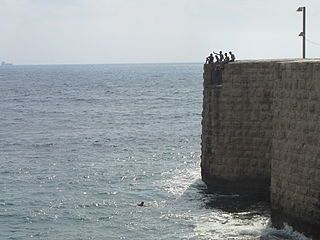Consolidated Edison Upgrading Infrastructure — Why Not Address The Underlying Problem?

“Sandy caused incredible damage to our energy delivery systems, disrupting the lives of millions of New Yorkers,” said Con Edison Chairman and CEO Kevin Burke. “While we recognize that these weather events represent a ‘new normal,’ our goal through our investments is to lessen the hardships that violent weather causes for our customers.”
I found it interesting that the increased frequency and severity of extreme weather events and the climate change that is causing them are so openly acknowledged by captains of industry. It’s hard to understand how people of this stature can affirm the existence of an enormous threat, and bulk up on infrastructure to alleviate the symptoms, but not put a plan in place to deal with the problem itself. Are we going to put dikes around the 217,490 miles of the planet’s coast lines?

Part of the disconnect lies in the fact that the models from the IPCC don’t show that we’ll need dikes around most of the coast-line within 20-40 years, and no government plans for a longer time frame than that.
If the IPCC models are correct, then the sea level will rise ~1 meter or so by 2100. While some ports will have to spend a few billion in maintenance costs to accommodate that level of ocean rise, and perhaps a few trillion might have to be spent in total for firming property that is close to the beach, very few cities will be threatened… Maybe Miami might have to raise itself a little, and New Orleans might need a hundred billion tons of dirt to firm themselves up… but we’re still talking about accommodation costs in the single-digit trillions by 2100. Include in that a ~100-500 billion/year additional cost for storms, droughts, and other issues related to global warming, and no-one is really going to be that impressed.
As long as that is what the models are saying, then there will never be support for truly investing heavy on climate change.
What concerns me is that the IPCC models are clearly understating the warming at the poles. Last summer’s arctic ice melt saw ice loss that was on par with the IPCC’s projections for 2035-2040. So in less than a decade the models were off by more than two decades.
While arctic ice melt doesn’t result in ocean level rising, the Greenland Ice sheet actually begins hundreds of feet below sea level. If the arctic is open water, absorbing 60-90% of the solar energy instead of reflecting 90% of the solar energy that strikes it every summer, then there will be hundreds of PWh of additional energy to be absorbed by the Greenland ice for perhaps 80 years…
If so, we might see 2 or even 3 meters of ocean level rise, and suddenly our current decisions to invest in whims or to invest chasing profit will seem like very poor choices… when we should have been targetting the most cost effective means of reducing GHG emissions as quickly as possible.
Thanks very much for the insight. Here’s what I wrote in response: http://2greenenergy.com/2013/05/31/big-governments-are-no-help-with-climate-change/.
Good to hear from you again.